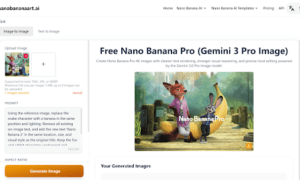Corporate philanthropy is transforming, and donation matching programs are becoming a cornerstone of this shift. These initiatives not only amplify charitable giving but also boost employee engagement and enhance a company’s public image. For businesses aiming to make a tangible difference, understanding the mechanics and benefits of donation matching programs is crucial.
Understanding Donation Matching Programs
Donation matching programs are corporate initiatives where companies match their employees’ charitable donations to eligible nonprofits. Typically, organizations set specific guidelines, such as matching ratios, donation caps, and eligible charities. For instance, a company might match employee donations dollar-for-dollar up to a predetermined limit annually. This approach doubles the financial impact of individual contributions.
By implementing these programs, companies encourage employees to support causes they care about. It also demonstrates the company’s commitment to giving back to the community. These programs can vary in structure but share a common goal: amplifying the impact of charitable efforts.
Key Features of Donation Matching Programs
- Matching Ratios: Most companies offer a 1:1 match, although some provide higher matching rates to encourage generosity.
- Eligibility Criteria: Employees must donate to approved nonprofits that align with the company’s values or philanthropic goals.
- Donation Limits: Companies often set annual caps, ensuring budget control while maintaining their commitment to social impact.
- Employee Participation: Some programs extend beyond full-time employees, including retirees or part-time staff.
- Understanding these features helps companies design programs that are both impactful and manageable.
Why Donation Matching Programs Matter
Donation matching programs go beyond financial contributions. They foster a culture of generosity, align corporate values with social responsibility, and create opportunities for meaningful engagement. Here’s why these programs are significant:
Enhancing Social Impact
Matched donations significantly increase the funds available to nonprofit organizations. For example, if 1,000 employees each donate $100 and the company matches these contributions, the total impact doubles to $200,000. Such initiatives can transform local communities and provide resources for critical issues like education, healthcare, and environmental protection.
Boosting Employee Engagement
When companies support causes employees care about, it fosters a sense of pride and connection. Employees feel valued, knowing their workplace shares their passion for making a difference. This enhanced engagement often leads to higher morale, productivity, and retention rates.
Improving Corporate Reputation
Philanthropic efforts enhance a company’s brand image. Donation matching programs demonstrate a commitment to social responsibility, which resonates with customers, investors, and job seekers. In today’s socially conscious market, companies that give back are often preferred over those that do not.
Tax Benefits for Companies
Corporations that participate in matching gift programs may qualify for tax deductions. By contributing to nonprofits, companies can reduce taxable income while supporting worthy causes. This financial advantage adds another layer of incentive for businesses to adopt these programs.
Steps to Implement an Effective Donation Matching Program
Launching a donation matching program requires thoughtful planning. Companies must ensure their program aligns with their mission and resonates with employees. Below are essential steps to establish a successful initiative:
Define Clear Objectives
Start by determining what the program aims to achieve. Whether the goal is to support specific causes, enhance employee engagement, or improve corporate reputation, clarity is key. Aligning objectives with company values ensures long-term success.
Establish Guidelines
Create detailed policies outlining matching ratios, donation caps, and eligibility requirements. Clearly communicate these guidelines to employees to avoid confusion. Transparency fosters trust and encourages participation.
Select Eligible Nonprofits
Partner with reputable organizations that align with your company’s philanthropic goals. Offering a broad selection of charities allows employees to choose causes they are passionate about. This flexibility increases participation rates.
Promote the Program
Effective communication is crucial to program success. Use internal channels like newsletters, intranet platforms, and meetings to raise awareness. Highlight success stories to inspire employees to participate.
Monitor and Evaluate
Track participation rates and donation amounts to measure the program’s impact. Regular evaluations help identify areas for improvement. Use feedback to refine the program and ensure it continues to meet its objectives.
Real-World Examples of Donation Matching Programs
Several companies have set benchmarks in corporate philanthropy through robust donation matching programs. Here are some notable examples:
Google matches employee donations up to $10,000 annually. The company also includes volunteer hours in its matching program, contributing $10 per hour of volunteer work. This approach encourages employees to support both financially and through personal involvement.
Microsoft
Microsoft’s program is one of the most generous, offering a dollar-for-dollar match up to $15,000 per employee annually. In addition, the company matches volunteer hours at a rate of $25 per hour. Microsoft’s commitment has made a significant impact on global nonprofits.
Starbucks
Starbucks’ donation matching program focuses on diversity and inclusion. The company matches employee donations to a wide range of nonprofits, emphasizing community-building initiatives. This inclusive approach resonates with employees and aligns with Starbucks’ corporate values.
Challenges and How to Overcome Them
While donation matching programs offer numerous benefits, companies may encounter challenges during implementation. Common obstacles include low participation rates, administrative complexities, and budget constraints. Here’s how to address these issues:
Encouraging Participation
To boost participation, make the program accessible and easy to use. Simplify the donation process by integrating it with payroll systems or creating user-friendly online portals. Recognizing and celebrating employee contributions can also motivate others to join.
Streamlining Administration
Managing donation matching programs can be time-consuming. Investing in software platforms designed for corporate giving simplifies administrative tasks. These tools track donations, manage approvals, and generate reports, saving time and resources.
Managing Costs
Set realistic donation caps to control expenses without compromising impact. Periodically review the budget and adjust limits as needed. Scaling the program gradually allows companies to balance generosity with financial sustainability.
The Future of Donation Matching Programs
As corporate social responsibility continues to gain prominence, donation matching programs are likely to evolve. Trends such as digital platforms, personalized giving options, and global outreach are shaping the future of these initiatives. Companies that embrace innovation and adapt to changing employee expectations will lead the way in corporate philanthropy.
Embracing Technology
Digital tools are revolutionizing donation matching programs. Platforms like Benevity and YourCause simplify donation tracking, automate matching processes, and provide real-time impact reporting. These advancements make it easier for companies to manage programs and demonstrate transparency.
Expanding Global Reach
With globalization, many companies are extending their programs to include international nonprofits. Supporting global causes fosters a sense of unity and addresses pressing issues beyond local communities. Expanding eligibility criteria ensures employees worldwide can participate.
Personalizing Giving Options
Offering personalized giving options enhances employee satisfaction. Allowing employees to nominate charities or suggest causes fosters a deeper connection to the program. Personalization ensures the initiative feels inclusive and employee-centered.
Conclusion
Donation matching programs are powerful tools for corporate philanthropy. They amplify the impact of charitable contributions, strengthen employee engagement, and enhance corporate reputation. By implementing thoughtful and effective programs, companies can make a lasting difference in the communities they serve. As these initiatives continue to transform, businesses that prioritize giving will remain at the forefront of positive social change.





























